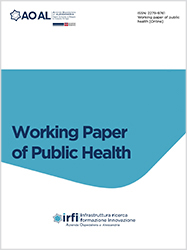Profilo di resistenza degli isolati di Candida spp. da emocoltura identificati mediante reazione a catena delle polimerasi real-time: 2022-2023
All claims expressed in this article are solely those of the authors and do not necessarily represent those of their affiliated organizations, or those of the publisher, the editors and the reviewers. Any product that may be evaluated in this article or claim that may be made by its manufacturer is not guaranteed or endorsed by the publisher.
Autori
Background: descrivere i pattern di suscettibilità ai farmaci antifungini degli isolati di Candida spp. identificati mediante reazione a catena delle polimerasi real-time da emocolture positive prelevate da pazienti ricoverati presso l'Azienda Ospedaliero-Universitaria SS. Antonio e Biagio e Cesare Arrigo di Alessandria nel periodo 2022-2023.
Materiali e Metodi: sono stati inclusi nello studio tutti i pazienti dei quali erano disponibili dati clinici, che sono stati sottoposti a prelievo per emocoltura risultata positiva soltanto per lieviti. Tutte le emocolture incluse sono state processate sia mediante reazione a catena delle polimerasi real-time che mediante esame colturale.
Risultati: nella nostra casistica di 67 emocolture positive soltanto per lieviti, tutti gli isolati sono risultati sensibili alle echinocandine e all'amfotericina B. Otto isolati su 19 (42%) di Candida parapsilosis e 2/14 (14.3%) di Candida glabrata sono risultati resistenti al fluconazolo.
Conclusioni: la rapida identificazione dell'isolato fungino mediante reazione a catena delle polimerasi real-time associata alla conoscenza dei pattern locali di suscettibilità ai farmaci può essere di aiuto nella scelta della migliore terapia antifungina, in attesa dell’antimicogramma.
Come citare

Questo volume è pubblicato con la licenza Creative Commons Attribuzione - Non commerciale 4.0 Internazionale.






